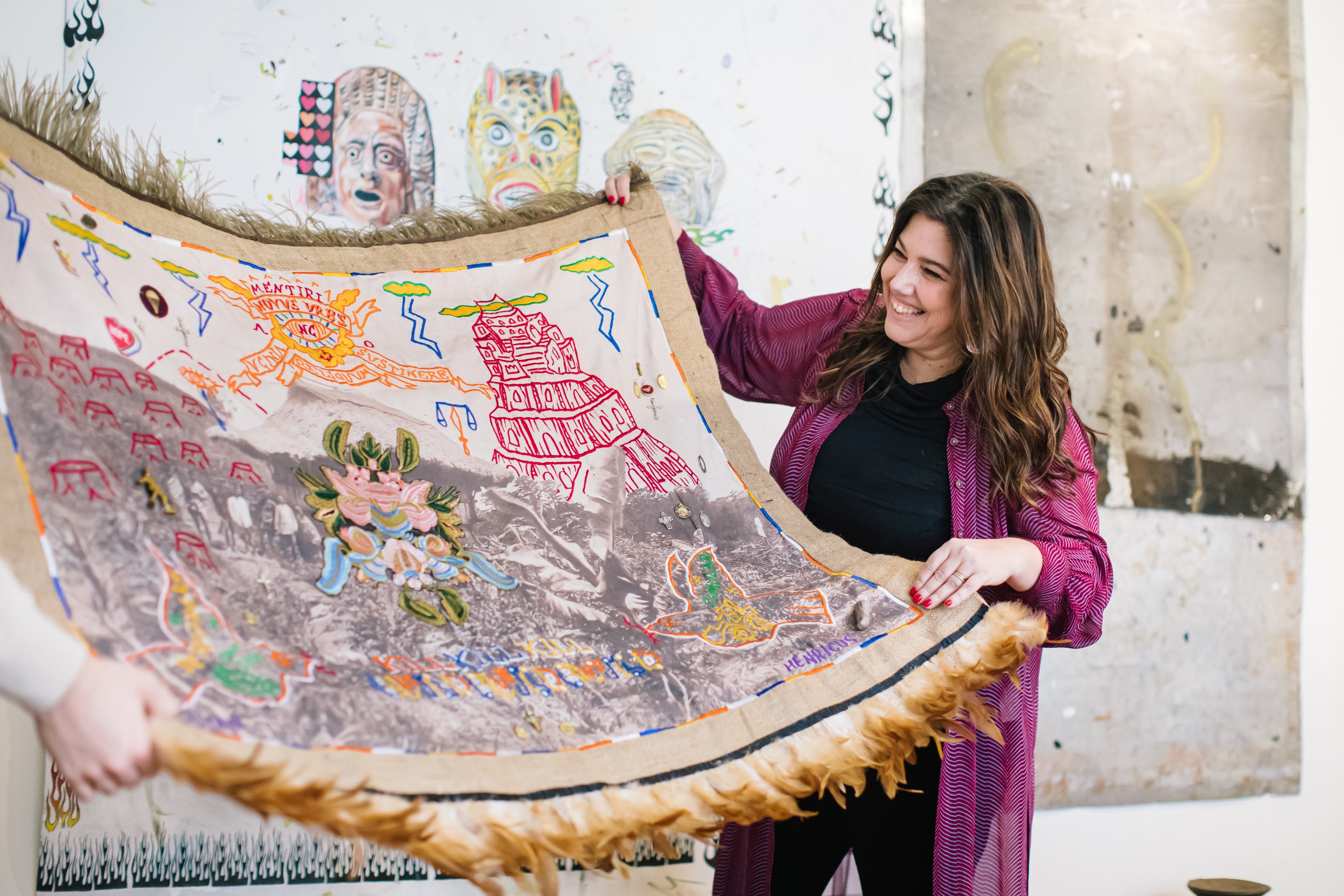
Over the past two decades, Benedicta Badia Nordenstahl has built an art collection that challenges the status quo, and throws into relief the norms of contemporary life.
Nordenstahl’s worldview has been informed by her native Argentina and her experiences living in Puerto Rico, Mexico, and the United States. Her perspective on collecting shifted again when she moved to Singapore five years ago and realized how disconnected the contemporary art scene there was from its Latin American equivalent. So Nordenstahl made it a philanthropic mission to build connections between emerging art ecosystems in different areas of the world, including throughout Latin America, the Middle East, and Southeast Asia.
Nordenstahl, who sits on the board of Argentina’s Fundación Espigas and its Documentation Center on the History of the Visual Arts, and who is also a member of the Guggenheim’s Latin Circle acquisitions committee, has lately been busy translating the ethics of collecting code of conduct into Spanish, and ramping up for a busy season of traveling to Frieze New York, the Venice Biennale, Documenta, and then London to take up the Delfina Foundation’s collector’s residency in June.
We caught up with Nordenstahl about her approach to collecting art, how she missed out on the chance to buy work by Goya, and what’s on her walls.
Work by Claudia Pena Salnas. Courtesy of Benedicta Badia Nordenstahl.
What was your most recent purchase?
Most of the time, I buy art in an artisanal way, where several parallel processes are happening at once. The actual moment of purchase is dependent on different things, such as the capacity of the artwork to enhance the collection. I am very excited to have recently acquired Rafa Esparza’s work on adobe, a Candice Lin installation, a “Precario” by Cecilia Vicuña, a work by Leelee Chan, and a mind-blowing video by Naomi Rincón Gallardo.
Which works or artists are you hoping to add to your collection this year?
I usually have a backlog of two years on my “wish list,” with a complex system of priorities that can change depending on external circumstances. But I am currently working on acquiring a body of international video works.
Some of the artists I am wishing to work with are the Otolith group, Ming Wong, Naeem Mohaiemen, Bani Abidi, and Basel Abbas and Ruanne Abou-Rahme. African art is also a world I have yet to discover. Since I am an emotional buyer, I withdrew from it some years ago, after I was snubbed by a gallery. Yet through Mariane Ibrahim’s Chicago gallery and the South Africa-based South South platform, I have met amazing people that had offered to guide me.
Work by Carmen Argote. Courtesy of Benedicta Badia Nordenstahl.
What is the most expensive work of art that you own?
Relating an artwork to its market value is understanding it in terms of its market consumption. I am not naïve; I know it exists. But describing an artwork in those terms is reducing art to its minimum expression. If art has a public social role, the market’s speculations and value indicators become moot.
Where do you buy art most frequently?
I am a huge advocate of sustaining all roles of the art ecosystem. But as my buying process takes a lot of studying, for the past two years I was easily able to buy from PDFs. Yet, I have reached PDF fatigue syndrome and I am in desperate need to see art in situ!
At home with her collection. Courtesy of Benedicta Badia Nordenstahl.
Is there a work you regret purchasing?
Yes, I regret buying artworks when I later see the behavior of an artist or its gallery in the market that I consider does not abide by what their own discourses stand for. I endorse the guidelines outlined in the Ethics of Collecting.
What work do you have hanging in your bathroom?
This is the most tricky question! I mostly buy artworks for my bathroom. Contrary to what people might think, for me it is the utmost honor for an artwork to be let into the realm of the most vulnerable intimate space of life. A close second would be my bedroom.
What work do you wish you had bought when you had the chance?
Hands down, [one of] Francisco José de Goya y Lucientes’s “Black” paintings.
If you could steal one work of art without getting caught, what would it be?
If I was to have fun and interact, it would probably be a Jeff Koons, where I would then organize a massive collective public performance embedded within a “rite of discharge,” aka intervention. Costumes optional, but welcomed. (KAWS could be a second candidate.)
Work by José Carlos Martinat. Courtesy of Benedicta Badia Nordenstahl.
What does art mean to you?
Aby Warburg thought of art as humanity’s way of mediating and coping, as a sort of filter to protect us from the immediacy of what we cannot process or control. But it is also a connection between our rational thoughts and the primitive instincts and elemental emotions we all possess. He kind of rocks, so I am very near to his line of thought.
What does style mean to you? How do you define the relationship between art and style?
Style is 100 percent visual indoctrination. We have been historically trained to see what is beautiful or socially acceptable. It takes time, combined with society’s validation systems—anything from cannons and theories to influencers and fashion magazines—for something that breaks with these norms to be widely accepted. Think of the initial rejection experienced by the Impressionists, whose paintings are today coveted and sell for millions. To be relevant, I believe that an artist needs to take unconscious risks while creating, own a certain maturity of intentions, and find complexity in their purpose. Then they go beyond the current styles and become mediators of what’s to come.